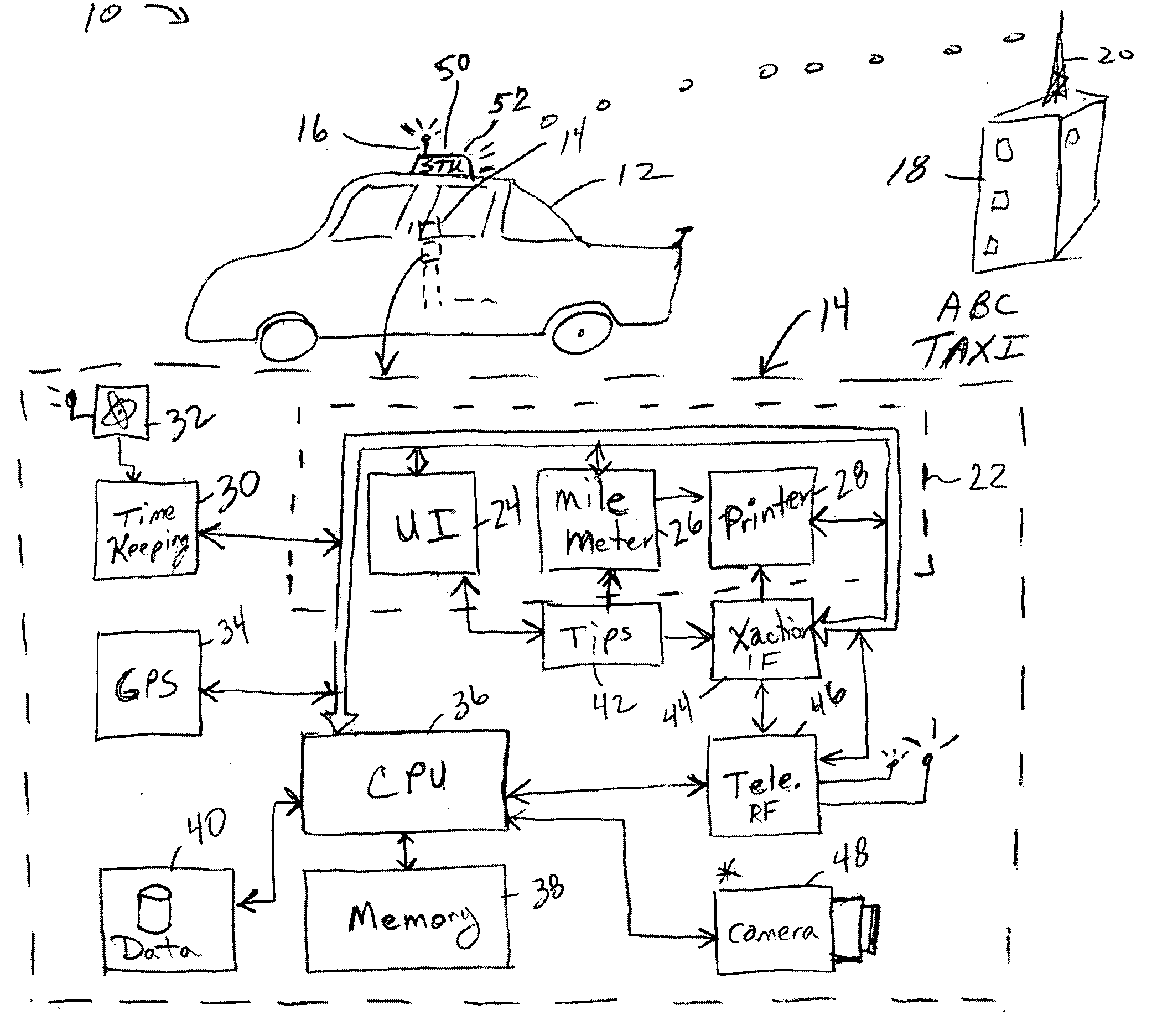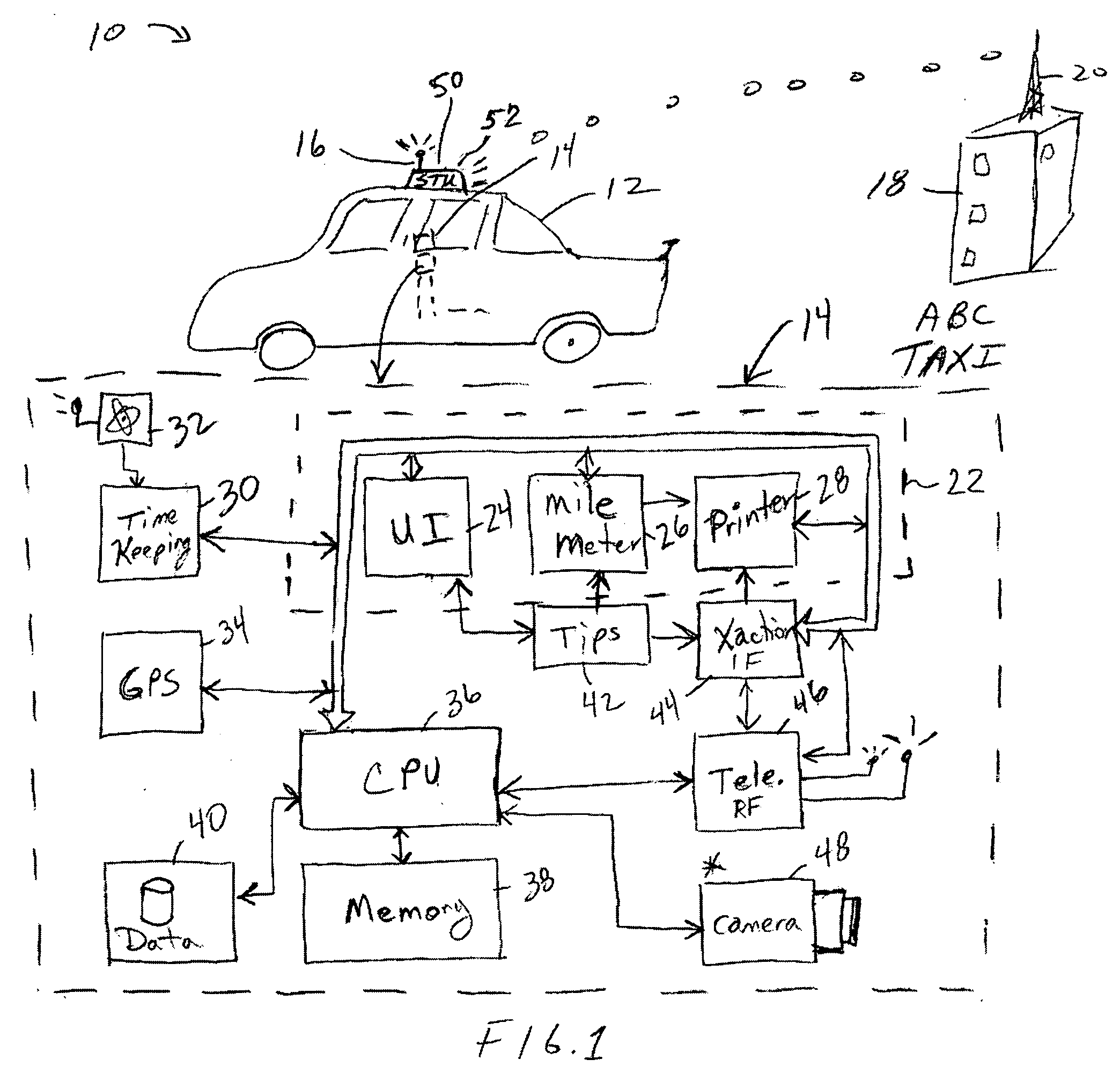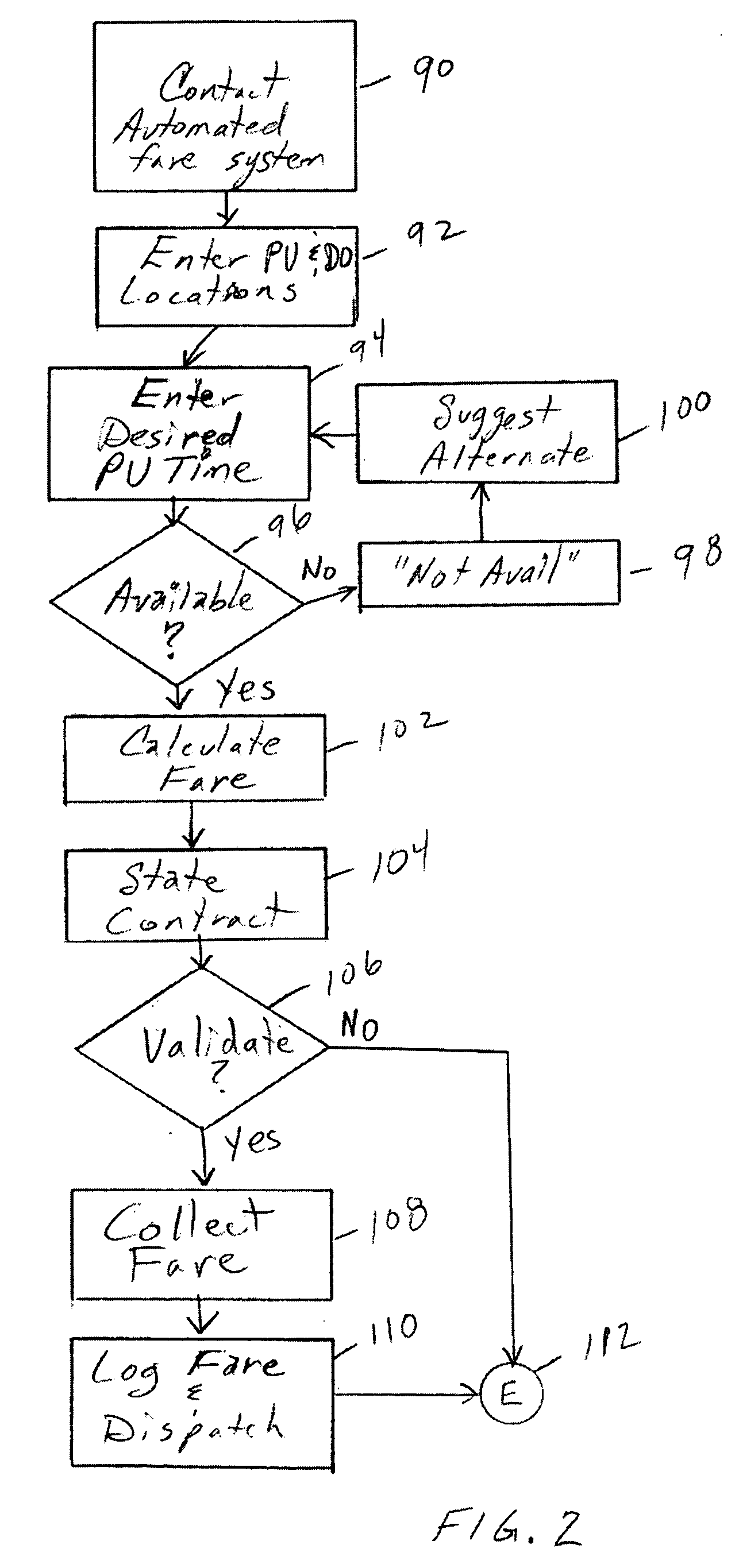Conveyance scheduling and logistics system
a logistics system and transportation technology, applied in the field of transportation, can solve the problems of taxi company not knowing if the user is, taxi company losing money, and difficulty in scheduling optimum routing for each taxi
- Summary
- Abstract
- Description
- Claims
- Application Information
AI Technical Summary
Benefits of technology
Problems solved by technology
Method used
Image
Examples
first embodiment
[0169] Two basic types of embodiments are described, a non-autonomous and an autonomous embodiment, as well as a combination of the two embodiments. In the first type the unit operates non-autonomously wherein the unit responds to challenges based on the registered data, and can respond also to conventional challenges or challenges directed to its specific unit number. In this first type the unit can response back to every challenge or to a specific type of challenge, such as threshold sensing challenge, based on the sensed data. In this type the enhanced RFID tags record the sensed conditions and report these when responding to any challenge, in a second type the units generate responses only when certain threshold conditions of the sensed condition has been exceeded, such as sensing which could be indicative of product tampering.
[0170] The units which convey the information in response to a challenge draw the power necessary for responding to the challenge from the challenge itsel...
embodiment 400
[0211] FIG. 7 depicts a different aspect of the invention wherein the secure RFID is used in an embodiment 400 for controlling who can operate equipment. In this embodiment the equipment generates periodic RFID checks (on power-up and every minute or so thereafter). User wears an RFID as sticker on ID tag, wallet card, pen, or so forth. Equipment only operates for personnel with correct level of clearance, or even for a specific individual.
[0212] A laptop computer 402 having special application programming for controlling a factory floor 404 (or otherwise providing information or control to which access is to be limited). A detector-annunciator 406 installed on the laptop computer generates challenges upon being powered up. If the challenges are properly responded to by an RFID unit, such as the one around the neck of individual 408 contained on the ID tag 410, then the computer can be operated conventionally. However, if the person walks out of range of the computer the screen blan...
embodiment 550
[0235] Embodiment 550 exemplifies this form of transition lighting wherein a lamp 552 (incandescent or any other form of lighting) is coupled through a switch 554 to the power mains, such as 110 VAC. A conventional AC power switch 556 can be utilized in this example for switching the power to lamp 552.
[0236] A means for storing electrical power charges during the time the light is in the On position and upon detecting that switch 556 has open circuited, it activates its own lighting thus providing some light to allow the user to safely egress.
[0237] Energy can be stored on a capacitor 558 upon which charge is stored as current passes through rectifier 562 and limiting resistor 560. When light switch 556 is switched to OFF then switch 564, exemplified as a MOSFET switch, activates this allowing the current from capacitor 558 to power LED 566. The intensity of LED 566 naturally drops as the charge on the capacitor is dissipated. It should be noted that no additional annunciation means...
PUM
 Login to View More
Login to View More Abstract
Description
Claims
Application Information
 Login to View More
Login to View More - R&D
- Intellectual Property
- Life Sciences
- Materials
- Tech Scout
- Unparalleled Data Quality
- Higher Quality Content
- 60% Fewer Hallucinations
Browse by: Latest US Patents, China's latest patents, Technical Efficacy Thesaurus, Application Domain, Technology Topic, Popular Technical Reports.
© 2025 PatSnap. All rights reserved.Legal|Privacy policy|Modern Slavery Act Transparency Statement|Sitemap|About US| Contact US: help@patsnap.com



